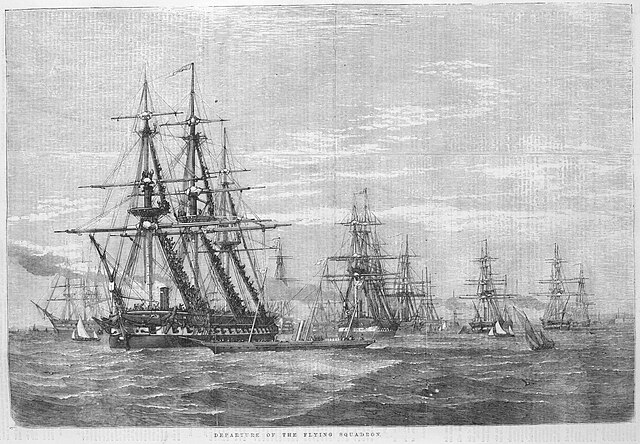Flying Squadron (United Kingdom)
The Flying Squadron was a Royal Navy squadron formed at least three times. Its first formation existed from June 1869-November 1870.
Departure of the Flying Squadron from Portsmouth for the Baltic in 1855. Illustrated London News
The British Flying Squadron of 1869 leaving False Bay, Cape of Good Hope, showing Liverpool (1860), Rattlesnake (1861), Scylla (1856), Endymion (1865), Bristol (1861), Barrosa (1860), and Seringapatam (1819). Illustrated London News 1869
The Flying Squadron of 1869 under Rear-Admiral Hornby at Wellington, with ships Rosario, Barossa, Endymion, Scylla, Liverpool, Phoebe and Liffey.
Plymouth Sound (June, 1869)
HMS Volage was a Volage-class corvette built for the Royal Navy in the late 1860s. She spent most of her first commission assigned to the Flying Squadron circumnavigating the world, and later carried a party of astronomers to the Kerguelen Islands to observe the transit of Venus in 1874. The ship was then assigned as the senior officer's ship in South American waters until she was transferred to the Training Squadron during the 1880s. Volage was paid off in 1899 and sold for scrap in 1904.
Circa 1892 photograph of HMS Volage, lead ship of the class
The hulk 'Gloucester' and HMS 'Volage' at Chatham, sometime from 1871 to 1884






